ESD - Here I come!
Column week 1 Author: Jesper Goorden
Today was the kick-off meeting of the course Engineering for Sustainable Development. Me and 31 (or 35?) other students from different faculties will work together in this course to eventually come up with a sustainable design for the island of Texel. In this design all aspects of sustainability one can think of will be represented. The design will be elaborated during our visit on the island in the 2nd week of January, but prior to this a lot of research has to be done in the coming weeks. This research is subdivided into 9 “subsystems” which will be investigated in smaller groups as well as a research on the whole system of the island. The research of the 9 subsystems will be combined during the stay on the island and forms the foundation of the final design.
After a short introduction – in which I saw a lot familiar faces from architecture – it was time to assign the subsystems to each team. My team is now responsible for the subsystem “from the sea”. I think this topic can get really interesting, especially in relation to the other subsystems such as food, transport, leisure, water cycles and energy production because of the possibilities the sea can offer for them.
I have never been on the island of Texel, so the lecture of Han Brezet was a welcome first introduction to the island and some interesting facts came across. I think the island offers great possibilities for a holistic sustainable design. Because of my background in building technology I would like to investigate which sustainable innovations can be brought to the built environment on Texel, but also which local resources can be used to eventually create closed cycles. The fact that the population of the island is way bigger (up to 100.000 according to Han) during summer holidays poses a real challenge to do this; but at the same time I see opportunities here.
Although in think the research part will not always be fun to do, I am looking forward to investigate the possibilities towards a sustainable island design and to work together with students from other faculties. I’m also very curious to see what we can achieve as a team during the week on Texel and if the design will be feasible in the end. Anyway, I am excited I may take part in this course and I can’t wait to finally start designing.
Texel, here we come!!!
- Jesper
Acceptable discomfort for sustainability

Team research on sustainability should start with doing something out of your comfort zones. Honestly, I never thought about it like this until some time ago.
Team research on sustainability should start with doing something out of your comfort zones. Honestly, I never thought about it like this until some time ago.
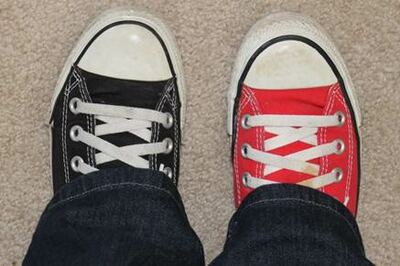
Shared cups, dishes or cutlery was common use in the middle ages, and the exchange of clothes, shoes or even tooth brushes is intended for close friends or partners. Not at all for future colleagues.
Nevertheless, today 36 engineers that hardly know each other took off their left shoe and put on some one’s else. Still warm, may be clammy or smelly; yech! Why? Because they are all want are engaged with sustainability and as engineers want to contribute to making that happen. Aha, you may think. So?! Let me explain why we dived into this experiment. Engineering for sustainability often implies working in an international interdisciplinary research team. And that means you have to cooperate with people you don’t know, and you may not understand at first hand because they are trained in another profession than you’re and/or have a different cultural background. They know things that you don’t. They do things in different ways. They have different professional norms and values. Discussing with such people will not at all be like a ‘usual’ debate among experts like you. The only thing you’ll know for sure is that it will be different. That’s discomfort. Or better, acceptable discomfort.
Evolutionary change and transitions are said to orginate in such discomfort. If we seek to make major societal changes like sustainability transitions happen, experts have to respond freshly to the challenges faced by them. They may be aware that when they do as they always do, they will get what they always get… so, if they want to contribute to sustainability, settings that force them to look at these challenges and solutions from a new perspective should be explored. Settings that go beyond set disciplinary, professional or cultural boundaries and allow open mindedness, engagement and activeness. They are in a way searching for discomfort that stimulates creativeness, innovation, combining ideas that are not be combined sofar. The type of discomfort that does not allow for routines that will produce regular solutions, but at the same time is not that uncomfortable that it closes off thinking. So, the challenge to engineers is to get out of your comfort zone, but keep thinking and engineering.
While biking home after today’s meeting, I realized that people are not made for permanent discomfort, and in the end all are looking for comfort(zones) and routines. Although change comes from discomfort, and a need to change routines we humans, we’re quite conservative though. If so, how then may transitions become to happen at all in the end? My preliminary thoughts are, that there are first movers, that challenge the wannabes. Who at their turn … .etcetera. In the end the ultra conservatives among us – not to blame – become a minority and their comfortzone – do as always – will become uncomfortable. That’s why even they will change their behaviour, and find an alternative for what used to be their favourite shoes, car or lifestyle.
Doing the dishes
The complexity of sustainable development

Doing the dishes
Yesterday, our dishwasher refused to fulfil his main task: cleaning the dishes. It forced me (and my roommates), to do the dishes by hand. Although it can be an entertaining activity to wash the dishes while singing along with Pitbull (babababababababy I'm on fire), we rather have a functioning dishwasher.
Several possibilities arise to handle this issue. The easiest option is to do nothing at all. Every evening we should gather for a dishwashing session of at least 20 minutes. Maybe one minor action is required, that is getting rid of the broken dishwasher. The second option is also a relatively easy option (apart from the dragging), but there is slightly more luxury involved: buying a new dishwasher. The third and more advanced option is to try to repair the dishwasher. The word 'try' is used because no success is guaranteed with a dorm that consists out of five ladies. As TU Delft students, also known as 'fietsenmakers', it is expected that we have some basic repair knowledge. Therefore, the challenge of repairing the dishwasher is accepted. After watching dozens of ''how to's'' on Youtube, dismounting and assembling again, we came to the conclusion that we couldn't fix the problem ourselves.
The dishwashing issue set me thinking about the sustainability of dishwashing. I always assumed that a dishwasher is more environmental friendly because it uses only a small amount of water. A quick research on the Internet taught me that the carbon footprint of a dishwasher on 55 degrees (770 g CO2) is sufficiently smaller than washing by hand with extravagant use of hot water (8.000 g CO2) (Berners-Lee, 2010). However, cleaning the dishes not too hot and using water sparingly results in an emission of 540 g CO2, which is smaller than the electronic competitor. The temperature of water has thus a major effect, but the amount of water (in relation to the dishes) has also a significant influence. Other aspects that influence the sustainability (from a 3P perspective) are the type and amount of soap, soaking or not, a hot fill connection and its heater, cleaning of the machine, purchase price, time etc. Concluding, what is the most sustainable way of doing the dishes? The answer to this question is: it depends.
It depends on the all the size of the household, it depends on the way the water is heated, it depends on all the aspects mentioned in the previous paragraph and more. Besides, it also depends on the way sustainability is measured. The amount of CO2 emitted gives an indication of the sustainability but ignores the effect of a broken machine (waste material). I am not sure whether there is only one right answer to this question. From different perspectives, different answers are correct. This results in the fact that sustainability is a complex and broad problem. During the course Engineering for Sustainable Development, I expect to get a greater understanding of sustainable development and it related systems. Maybe it leads eventually to the (or my) answer on the question. Unfortunately, for the time being I am forced to do the dishes by hand.
Berners-Lee, M. (2010). How Bad Are Bananas? The Carbon Footprint of Everything . London: Profile Books LTD.
13 November - Introducing my Column idea

Within the next 7 weeks my columns will consist about two things; first I will identify the main challenge of that week. Then, I will write about a few Climate-KIC initiatives that are trying to deal with these problems. These initiatives can be either start-ups or Climate-KIC projects. As a Climate-KIC student, I am trying to promote my platform and hope to inspire my fellow students with initiatives from the Climate-KIC community.
Within the next 7 weeks my columns will consist about two things; first I will identify the main challenge of that week. Then, I will write about a few Climate-KIC initiatives that are trying to deal with these problems. These initiatives can be either start-ups or Climate-KIC projects. As a Climate-KIC student, I am trying to promote my platform and hope to inspire my fellow students with initiatives from the Climate-KIC community.
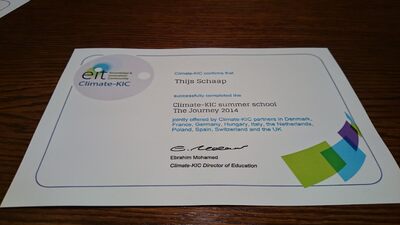
Hello. Today I will introduce the set-up of my column idea. As a master student Management of Technology, I am enrolled in the Climate-KIC program. Climate-KIC is Europe's main Climate initiative. Its activities can be classified in four pillars; education for (MSc or PhD) students, partnering with businesses, supporting entrepreneurs in clean businesses through different incubators and liaising with public bodies.
A lot of projects have been generated by the Climate-KIC platform and many startups have developed through Climate-KICs incubating projects. These initiatives can be classified in one of the eight themes of Climate-KIC; click here to find out more about these different themes.
Different themes of Climate-KIC
Projects of Climate-KIC are usually a collaboration of Climate-KIC and several partners. These partners can be either academic institutions, research institutions or industry and more often than not, it is a blend of these three. The aim of these project is to identify markets for climate mitigation and adaption innovations through pathfinder projects, and invest in innovation projects to create products and services and take them to market through existing businesses, new joint ventures and spin-off companies.
Start-ups are, well, start-ups. Young, bright-minded people who have an idea but initially have no clue how to bring those ideas to the market and actually change something. Climate-KIC supports these entrepreneurs with money and tacit knowledge about growing businesses. It also connects them to people who have the know-how and experience about growing market. A source of these bright minds is the Climate-KIC summer school "The Journey", which I successfully finished as proved by the image above.
Every week a set of information about the topic of the week is generated within this platform. I will pick out some things that have been discussed last week and then introduce some of the Climate-KIC initiatives that are related to this. Therefore, my next column will be about the topic of the first week - sustainable transitions.
So why did I choose this setup? Well, as Geels (2004) says, transitions come about when dynamics at these three levels (niches, regimes and landscape developments, TS) link up and reinforce each other. Furthermore, he quotes from an older source that cognitive routines make engineers and designers look in particular directions and not in others. So, by informing the engineers of this course (that will read this column...) about the outcomes of Europe's main climate initiative, I hope to kickstart the transition! Theoretically, that should work right??
(Okay, maybe I am just looking to promote my platform as a Climate-KIC student...;))
The greatest challenge of my future career
Lizet column #1
I’m not a participant of this project because I like ‘sustainability’ that much, actually I find the term kind of annoying. I’m also not a participant because I love Texel, actually I have never been there before. I’m also not a participant because I love nature, actually I prefer a vibrant city. I’m a participant because I will become an engineer next year and will hopefully (re)create a lot of big stuff (housing, stations, roads, rails etcetera) and the greatest challenge of all these future projects will be to fulfil them in a responsible way. After all, we want to live in a beautiful and pleasant environment and also give that opportunity to our children.
The coming months me and my team will focus on the materials and waste on Texel. When I look at my own trash can, it is shocking to see how fast it fills and I’m sure Texel has the same problem. Our aim is to come with a beautiful plan that helps Texel reducing her material metabolism. I’m looking forward to this project since I am convinced that much benefits can be achieved in the waste management. In the meanwhile, my personal goal is to make sure that these benefits also count for my own trash can.
The BIG BLUE
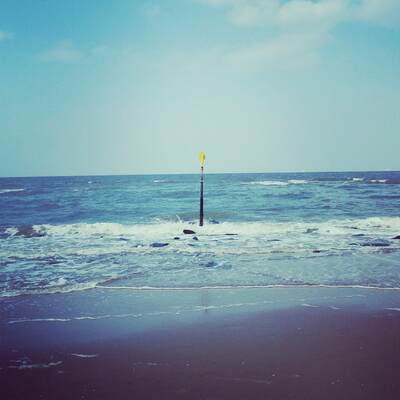
After watching the documentary “Mission blue” just minutes after I had sushi for dinner one day, I really had to start questioning my choices. The documentary follows Sylvia Earle through her life as a marine biologist, exploring our vast oceans. The change she has seen in the quality of the oceans just under her lifetime is scary. Coral reefs are dying, waste is collecting, oil spills are more frequent, we overfish and extinguish entire populations, etc. The list just goes on. Our oceans are absorbing CO2 emissions, and when CO2 emissions are increasing this leads to acidification of the oceans. As Han Brezet said, researchers have seen that outside the island Texel about 90 % of the fish population has completely changed over a period of the last 50 years. Of course, change does not necessarily have to be a bad thing. In many other aspects of life change is usually seen as something very positive. In this case however, we know that the oceans are hurting. And we are the ones hurting them. By demanding a lifestyle that is impossible to maintain without hurting some part of our precious ecosystem. The way we currently treat our oceans is unsustainable. We’re certainly securing our own acute needs, but not leaving anything for future generations.
This is when I began to question my sushi dinner. Why should I eat fish when I know the tuna is caught before it is old enough to reproduce and keep the population intact?
The answer to that question is that I just shouldn't. Sylvia Earle does not eat fish. She’s seen what the fish industry does to our planet, and what it will do if we don’t change our demands. Having a certain standard of life (e.g. being able to have sushi on a Saturday night), and also expecting that standard, is really problematic. I’m the first to admit that it’s hard to change a behavior even if you know how wrong it is. I think, for us to start making better and more sustainable choices, we cannot look at it as we are giving something up and not getting anything in return. We see it as a downgrade to give up something (having a certain quality of life) for a vague benefit (an intact animal population, cleaner oceans, etc.). We have to reset our minds and think differently. We have to see it as an upgrade to have something else for dinner that night, a benefit for everyone.
Transition from a linear to a circular economy
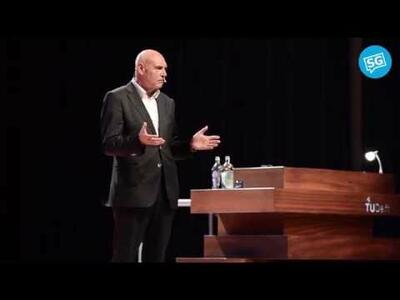
When I was asked for my sustainability hero in class, a lot of different people came to mind. I thought of an innovator like Elon Musk from Tesla, or the artist Daan Roosegaarde, who came up with the ‘smart highway’ concept and the ‘smog vacuum cleaner’. I eventually went with Herman Wijffels, of whom I recently attended a Studium Generale talk. In this talk mister Wijffels explained his vision on the future of technology, society and economy.
One particular interesting idea to me was the idea that in the years to come, the economy will transition from a linear to a circular economy. A linear economy could be roughly described with the following process scheme: harvest, produce, consume, and discard. To transform this scheme into a circular scheme a feedback loop is introduced. Biological materials should still be harvested, produced and consumed, but instead of being discarded at the end of their life cycle, these materials should be used to enrich the natural environment. Technical materials, on the other hand, should be produced, used and than returned to the producer to be re-used. This may sound simple, but the transition has huge implications on how we will use and own our products. Devices and appliances like your washing machine, refrigerator, telephone, car, etc. will no longer be your property for instance. You will need to lease them from the manufacturer, use them, and at the end of their life cycle return them to the producer, to let them re-use the materials. This will be quite a transition for most people that are used to owning these kinds of devices as well as for the business models of the companies and the regulations involved. Mister Wijffels also expects that companies will again choose to produce on a more local scale in this kind of system, which will have implications on worldwide trading. The transition from a linear to a circular economy would be a very large-scale socio-technical transition as was described in class last week.
Although I did not fully agree with every notion of mister Wijffels, I was intrigued by this idea. Can we already introduce some of these notions in our case? At this stage the answer is probably no, but I will certainly keep it in the back of my mind during the work.
Rainwater harvesting
How to harvest the rain water? What are the the advantages? The example of Vietnam.
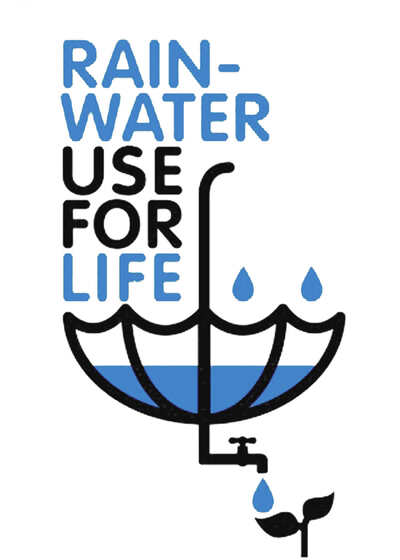
got RAIN and get WATER
Within the last decades, water consumption has significantly increased. More specifically, every year the water demands are rising around 50billin m^3 [1]. As a result, different ways of water recycle are in a highlight. One direct, efficient, innovative, alternative and cheap solution, is the water harvesting.
The main steps of a rainwater harvesting system are to capture, storage, filter the rain water and finally channeled the clean one for use.
Rainwater harvesting is the accumulation and deposition of rainwater for reuse on-site, rather than allowing it to runoff. Uses include water for garden, water for livestock, water for irrigation, water for domestic use with proper treatment, indoors heating for houses etc[2]. It can also use as potable water, as rainwater is substantially free of salinity and other salts. Rainwater harvesting is beneficial because provides an independent water supply during regional water restrictions by reducing the existing water supply and simultaneously providing water during the whole year, especially in drought seasons by reducing the run-off, the erosion and the contamination of surface water.
The main components of a rain harvesting system are a catchment surface, which can be also the roofs of the existing buildings or a new catchment surface, the conveyance system (pipes), the storage area, which ranges in sizes according the catchment surface and can be under or on the ground and the treatment system (filters, pump).
Finally, I would like to refer an example. In Vietnam, where people are suffering of lack of clean water, they install canvas catchment outside of their houses. The canvas catchment is a smooth, clean surface with a high run-off coefficient. The area of the catchment is 9 m^2, it is expected to be large enough to collect sufficient water for a household for six persons. It is not expensive, light and easy to install, clean and replace. The disadvantage is that it could be broken because of exposure to the sun however it can be replaced easily. The storage tank is made from foldable fabric materials that are light, flexible and could be installed and moved easily.
So, let’s harvest RAINWATER!
E.G.
[1] http://www.worldometers.info/water
[2] http://en.wikipedia.org/wiki/Rainwater_harvesting
Solar bike lane

Last week I mentioned the recently opened solar-bike lane in Krommenie, I would like to use this column to reflect on that project.
Last week I mentioned the recently opened solar-bike lane in Krommenie, I would like to use this column to reflect on that project.
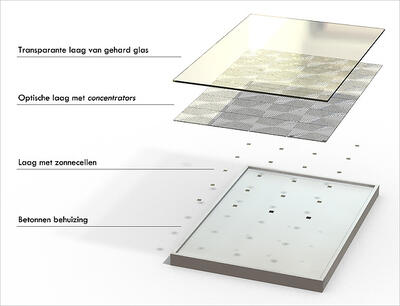
The news fuzz was about a 70 metre long pilot which has produced 140 kWh of energy in the past two weeks, a promising result according to TNO. The path will be tested during the next three years in order to improve the technology. Though it is a costly project of 3 million euros, the current expectations predict a pay-back-time of 10 years for similar roads in the future.
I think it's a great project as it creates attention both for the European Energy goals and the current level of solar technologies. Solar panels will only become cheaper in the future and though it might seem impossible now, this might create the opportunity to implement them not only in roads but also in roof tiles and lots of other surfaces.
The project might not be a succes in three years but it certainly reached a lot of people. In this way it might trigger another brilliant idea!
(http://www.volkskrant.nl/economie/eerste-test-met-fietspad-van-zonnepanelen~a3788229/)
Ecological Footprint???
KEY WORDS: Ecological Footprint, Biocapacity, Sustainability.
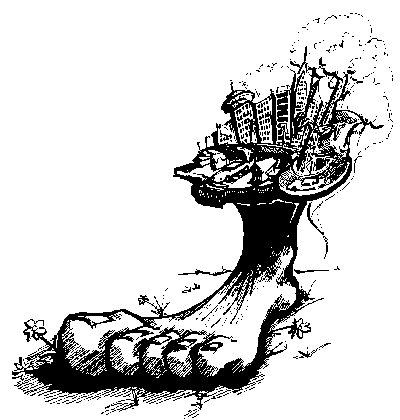
Tatiana Armijos Moya
Through my short but amazed experience within the sustainable world I came up with many questions about sustainability and all the concepts involved with it, specially regarding the ecological footprint concept. I realized how difficult was to explain this concept within people who have never heard about it a month ago during a workshop in Hanoi-Vietnam, so I dedicated this column to my Vietnamese fellows from Hanoi, who tried really hard to understand my inaccurate and maybe “too technical” explanation about Ecological Footprint and Biocapacity concepts. That’s why my first column is going to try to explain Ecological Footprint and Biocapacity concepts.
According to Wackelmagel and Rees (1996) in their book “Our Ecological Footprint” it was stated, “The Ecological Footprint of a society is the area of land required to comply with the annual needs and the processing of waste”. And it was established that the five most significant causes of environmental damage are food, accommodation, motorized transportation, consumption goods and services such as education, health care, leisure, tourism, among others. This area can be compared with the Biocapacity (biological capacity) of the place that is the total amount of productive area that exists to generate these resources and to absorb the waste. This evaluation allows comparing ecosystems from different areas of the world with its bio-productivity using the same unit, a global hectare. A global hectare represents a hectare with world average productivity. For instance, the Netherlands (33 000 km2) in order to supply the needs of its inhabitants, regarding urbanization, food, agricultural products and forestry, it is required an area the size of France (450 000 km2), 15 times larger. Moreover, according the Global Footprint Network for 2007, humanity's total ecological footprint was estimated at 1.5 planet Earths; that is, humanity uses ecological services 1.5 times as quickly as Earth can renew them.
(Kristinsson, 2012) (Ewing, Moore, Goldfinger, Oursler, Reed, & Wackernagel, 2010)
It is important to mention that nowadays the Ecological footprint analysis is performed around the world as a guide of environmental sustainability. It is used to measure and manage the use of resources regarding the economy of each country. It is also used to analyze people lifestyle regarding sustainability point of view. In summary, it is important to understand ecological footprint and Biocapacity concepts because mankind cannot make meaningful decisions about where it needs to go before people are aware of where they stand. (EF=ECOLOGICAL FOOTPRINT)
Ewing, B., Moore, D., Goldfinger, S., Oursler, A., Reed, A., & Wackernagel, M. (2010). Ecological Footprint Atlas 2010. California : GlobalFootprintNetwork.
Kristinsson, J. (2012). Integrated Sustainable Design. Delft/Deventer: Delftdigitalpress.
Sustainability is in Your Mind
Keywords: Sustainability, Lifestyle
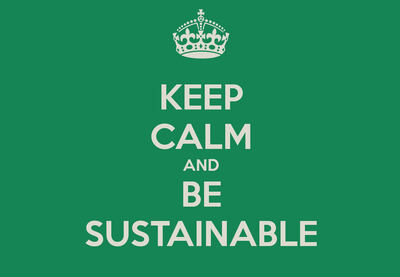
When we talk about sustainability, we are basically talking about protecting the natural environment, because of the harm that our industrial society has been doing for the last 200 years. After the industrial revolution, people started thinking that they could take resources from Nature without any limit. We also started thinking that all the highly toxic wastes produced by machines and systems would not result in an important impact to the environment. Eventually, our society shaped our mind in a consumistic way, because we have been taught that whatever we buy and use will end up being a waste.
Lately, all this has been discussed and many different disciplines have agreed that we need a change.
What I believe (and also many specialists, like Bob Doppelt, the author of The power of sustainable thinking [1]) must change in the first place is the way we think and behave towards our environment.
Doppelt stated in his book that current environmental problems cannot be solved by only applying more efficient technologies. A fundamental change has to be done in people’s mind. Only after people will start thinking and behaving sustainably, all the progress in sustainable technology will be successful.
In order to think sustainable we need to shift from a perspective of “take-use-waste” to “borrow-use-replenish” mind-set. We need to understand that we can only borrow resources from Nature, use them as goods and then return them, without being harmful. The process must be circular, and able to be repeated over and over again. No damage must be done to the things we borrow from nature.
Too many people still think that sustainability does not depend on our daily behave, while it is actually deeply embedded in our lifestyle. It is the real trigger of the whole Sustainable Development. This is why Sustainability needs to be in our Minds first, in order to be then applied to the industrial society.
This is a short introduction for the broader topic of sustainable living related to our lifestyle, that I will describe through the next weekly columns.
Bibliography
1. Bob Doppelt, "The Power of Sustainable thinking", Earthscan, USA, 2008
Never Walk with Empty Hands!
“Never walk with empty hands!” This is what we all probably heard during our childhood when helping our parents with the household. It is a general principle to prevent wasting energy and effort, but often neglected in the ‘real’ world. It may happen that transport vehicles travel large distances without being fully loaded and thus consuming energy for solely the transportation of the vehicle itself. This is a result of supply chains that are not entirely closed.
The people of Texel are facing a huge challenge in making the entire island more sustainable. This can be done with new sustainable technologies, but, as stated in the article of Mulder, these are not per se the best solution. People may react unpredictably to a new innovation, which could result in a counter effective outcome.
Technology is a product of human society and therefore social developments and technical innovation are intertwined. This perspective is useful for developing strategies for the sustainable transition of Texel.
It depends on where one wants to start the transition. A new technology could be implemented and let time tell how people react on it. It is also possible to work a lot more on the societal part of the socio-technological system. With this approach, change is much more focused on people and they will decide by themselves what new technologies they will use. The outcome is rather unpredictable as well, but with this approach it can be prevented that a lot of money is spent on technologies that are used in the wrong way.
A closed community such as the one on Texel, could be both an advantage and disadvantage. It is disadvantageous, because the community could be a bit rigid and stubborn due to the strong coherence and social control. They could have a strong We-They feeling. On the contrary, a small and coherent group can also transform quite quickly when addressing the right people. The change of an individual is more clearly visible in a small group. Social transitions on Texel may thus be difficult in the beginning, but may go very rapidly in the end.
One could see social transitions in the form of habits. What products do you use? How do you move around on the island? How does the island get its supplies? For the theme of Food & More we look at ways of production, marketing and transportation. The entrepreneurs in the food sector on Texel are already focusing on organic production and marketing locality. Transportation of food, however, is not a very much-addressed topic.
Therefore it might be needed to think about solutions to make the food supply more sustainable. And why not in the first place by starting to never walk with empty hands? One could think of a large-scale food swap consisting of two supermarkets of which one is on the island and one on the mainland. A shuttle lorry provides the supermarket in e.g. Amsterdam with the local delicacies of Texel and takes products back from the mainland to the supermarket on the island. Both places benefit from each other in this way with a more energy efficient transport system as a result.
I think it is necessary to provide the people of Texel with new frameworks and habits that encourage a more sustainable lifestyle. This may help to achieve more improvement with less effort for a greener Texel!
Borris Boschman
Food for Thought
Review of processed food, packaging and transport. What happens to the leftover after it has been consumed and a look into food production at local production.
Review of processed food, packaging and transport. What happens to the leftover after it has been consumed and a look into food production at local production.
It was few days ago that we were all sitting for lunch after class, talking about the weekend. One of my friends talked about his trip back to Italy, where mozzarella is made fresh each day unlike here where it needs to be preserved, consuming so much energy for refrigeration. This made me thinking how much energy is utilized in transport, preservation and packaging.
In busy cities food is generally imported. The local produce is very little. This makes it necessary to import goods and use means to increase the shelf life of these food products, increasingly diminishing the nutrients. The supplies are imported from all places, near and far, sometimes having to use ships and airplanes. After which, everyday trucks of all supermarkets go around their outlet markets to replenish them with new supplies. This only adds to the energy in transport. Also, when the products are imported, a small part is discarded because of damages caused in transportation.
Moreover, for the growing demands of food products from foreign lands, it makes it necessary to use large amounts of packaging, where only a part goes to recycling. The case of excessive packaging also extends to non-food products such as cosmetics and other daily use, where majority of products have to be safe from water and hence, packed in plastics. A major chunk, depending on your location, goes to the trash where it is taken to a dump yard and accumulated. Of course, there are bio compostable products, but in reality, even a paper based product can take upto 70 years to become one with nature. Also, the large amounts of anaerobic respiration releases methane gas which, if let out in the air is the major cause of global warming. We have to ask ourselves, how can we make this sustainable?
This effect can be largely reduced by giving impetus to local production. It is especially important to take steps where a large amount of population resides and also where large tourism activities are expected.
Green or "Green"?
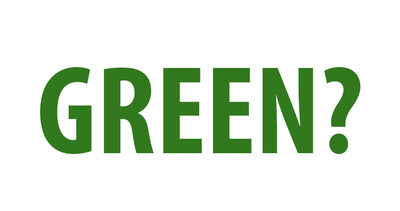
Recently I was asked a question about what is a green city? Speaking about green... Green cities...
I can assume, that those of us, who have dealt with sustainability topics and know what it is all about don’t have any concern regarding this issue. But if we ask people outside the circle of our friends, families, colleagues and those, who know and care? These are my thoughts for those, who still think that green is all about colour.
Green cities… What does it mean and what is it for? Is it only about making more parks and green roofs and planting more trees? Or is green city something more than just green colour?
From my perspective, making cities green is much more complicated process that involves various industries and that has to be implemented on different scales and levels. As a Building Technology student I have to deal with many questions on how to make our environment more sustainable and pleasant not only for nearest future, but also considering those people who are going to live after us.
Sustainable “green” cities play crucial role, if you want to achieve goal mentioned above. In the 21st century cities have direct connection to our daily life. People migrate from urban areas to rural ones and vice versa trying to find better place to live. But the fact is that cities keep growing and that means they need more resources to function. Urban island effect, air and water pollution, visual comfort, energy performance- these are only some of the problems that have to be solved today as there no time to delay them anymore. Increasing urban population not only forces us to take actions but also offers us, as the developers of the new friendly urban environment, more opportunities and possibilities.
I strongly believe that growing green city is not only about the green colour, however it is hard to imagine sustainable and pleasant for living city without any greenery introduced. And the fact that green colour represents harmless and ecological way of doing things is not a coincidence, because greenery does help to achieve some of sustainable goals. Or maybe, even the most important one-greenery does make us feel better. But still, let us think beyond this green border.
Why starting with IEQ rather than with Sustainability?

After writing a report on the indoor air quality (IAQ) of a primary school in Papendrecht, I was reminded of the importance of the quality of the indoor environment. In the Western countries people spend 80% of the time indoors. What we, engineers and architects, design or calculate for the build environment will have an effect on all those people who will make use of the building, now and in the future, once a year or five times a week.
After writing a report on the indoor air quality (IAQ) of a primary school in Papendrecht, I was reminded of the importance of the quality of the indoor environment. In the Western countries people spend 80% of the time indoors. What we, engineers and architects, design or calculate for the build environment will have an effect on all those people who will make use of the building, now and in the future, once a year or five times a week.
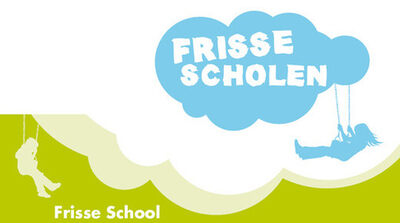
The assessment of the IAQ of the school in October 2014 was done after reviewing the literature, which stated that more than half of the primary schools in The Netherlands have a ‘bad’ IAQ. Poor IAQ can result in health issues and an increased chance to get: dry cough, rhinitis, nasal patency and asthma (Simoni et al., 2010; Bluyssen, 2009). Leading causes of school absenteeism (Lyons, 2010) associated with decreased student’s performance (Annesi et al., 2013). According to ‘Programma van eisen Frisse Scholen’ bad indoor quality is when more than 5% of the in-use time the CO2 level is above 1200 ppm. Class A is earned when the CO2 level remains under the 800 ppm and is considered as healthy.
Measurements in the school (CO2 levels are measured in 4 classrooms over a period of 2 days) show that also this primary school does not comply with the standards of Frisse Scholen. The building was rather new, so this was not expected. Teachers were also aware of the importance of the IAQ and had most of the time the windows and doors open, but that was not enough to keep the air in the classroom fresh. Imagine the winter situation when windows are closed, it will only get worse. The building is not properly engineered.
What has this to do with sustainability? When designing buildings, be aware that sustainable solutions can have an effect on a lot of different aspects, such as the indoor environmental quality. Not that sustainable goals will exclude healthy buildings, but it can be snowed under. Set the right priority and make sustainable buildings without losing important aspects as IAQ (and lots of others) in the design process.
AgentschapNL. (2012). Programma van Eisen Frisse Scholen NL Energie en Klimaat. Utrecht: Agentschap NL.
Annesi, I., Baiz, N., Banerjee, S., Rudnai, P., & Rive, S. (2013). Indoor Air Quality and Sources in Schools and Related Health Effects. Journal of Toxicology and Environmental Health, 16:8, 520-525. doi: 10.1080/10937404.2013.853609
Bluyssen, P. M. (2009). The Indoor Environment Handbook: How to make buildings healthy and comfortable. UK and USA: Earthscan.
Simoni, M., Anessi-Maesano, I., Sigsgaard, T., Norback, D., Wieslander, G., Nystad, W., . . . Viegi, G. (2010). School air quality related to dry cough, rhinitis and nasal patency in children. European respiratory journal, 35:4, 742-749. doi: 10.1183/09031936.00016309
All you can eat
According to the definition given by the Brundtland Commission, sustainable development is a "development that meets the needs of the present without compromising the ability of future generations to meet their own needs."
Identifying these needs are crucial when searching for opportunities and solutions for the many problems we face. These needs, however, do not exclusively describe our actual needs. They do not only describe the amount of oxygen or the amount of water needed for projected populations of future generations to survive. These needs also describe our quality of life, our habits and our lifestyle in general.
This lifestyle is where sustainability becomes an issue for people. Although many are willing to work on technological changes, there are only few who are willing to change their lifestyle. (Mulder, Ferrer & van Lente, 2011) Thankfully, even without changing your lifestyle and without technical knowledge, there are ways to become a bit more sustainable.
Hotel Union Geiranger in Norway has found a clever way to reduce their food and liquid waste. The Hotel Union saved around $16,000 in food costs by simply introducing smaller plates at its buffet meals. By reducing the plate size, guests became more selective about how much they pile onto their plates, resulting in major food waste reductions. By decreasing the height of the drinking glass by half a centimeter, Geiranger has also created a substantial saving in liquids. (Monday Morning Global Institute, 2014)
According to UNEP, simple actions by consumers and food retailers can dramatically cut the 1,3 billion tons of food lost or wasted each year (1/3 of all food produced in the world). Environmentally, food loss and waste generate many impacts including greenhouse gas emissions and inefficiently used water and land, which in turn can lead to diminished natural ecosystems.
The beauty of this simple solution is that it does not only benefit the environment, but it also clearly benefits the Hotel Union. Simple solutions like this can be implemented anywhere without a large investment, without technical knowledge and even more important, without changing your lifestyle. Due to the benefits for, in this case, the Hotel Union, this is a solution that many similar restaurants would be able to apply. This could diminish food waste, even at "All you can eat" places.
Monday Morning Global Institute. (2014). Sustania100 Retrieved 17-11, 2014, from http://www.sustainia.me/
Mulder, K., Ferrer, D., & van Lente, H. (2011). What is sustainable technology? Sheffield: Greenleaf Publishing.
Let's make changes together!
With 36 students of the Technical university of Delft from different faculties and different countries we are invited to design a more sustainable Texel. When hearing the assignment everyone was immediately eager. All the engineers in the making were super excited and immediately wanted to start designing innovations and sustainable adjustments for the island. You might think wow that’s a unique opportunity for Texel and its inhabitants, but there is one problem and that’s that the “texelaars” don’t like changes.
You can’t change anything, because they like how it is right now. They don’t want you to build sustainable houses, because they like their houses like they are. If you’re a mainlander and you want to live on Texel, you can be kicked off from the island, because they only want real “texelaars”. Only tourist are allowed, because the “texelaars” are dependent on them. Tourism is there income. Even their language is very ancient. “Tessels” dialect spoken in a large part of the island is very similar to medieval Dutch. The Dutch ij and ui sound like ie en uu. “Tesselaars are living (weune) in a huus and that huus protected from the sea by a diek. Other features of the Tessels dialect is his omission from ge- before past participles (dat hei'k deen - I did that) and pronouncing sk- in places where Dutch sch has listed (skéép = sheep).
Nevertheless, they have determined that the island needs to be self-sufficient in 2020. In order to achieve this, transitions are needed and changes has to made. Luckily we have Marc van Rijsselberghe one of the few pioneers of the island. He is collaboration with the mainlanders, to make Texel step by step more sustainable. He is the owner of the “zelfpluktuin” and one of the initiators in the research on saline agriculture. In the “zelfpluktuin” you can Pick your own fruit, vegetables and flowers straight from the garden”. Fresher and healthier is not possible! After picking you can quietly relax on the terrace and there is even children's playground with an excavators. How beautiful and naturally can it be. Still all the other farmers won’t follow.
Marc van Rijsselberghe should in my opinion be an inspiration for all the many conservative “Texelaars”. In order to achieve the goal of self-sufficiency the conservative “Texelaars” should think the same like he does and collaborate with the mainlanders. They should receive us, 36 engineers in making with all our sustainable ideas and innovations, with open arms, collaborate with us. We’re excited and you? Let’s make changes together!
From maximizing profit to maximizing value
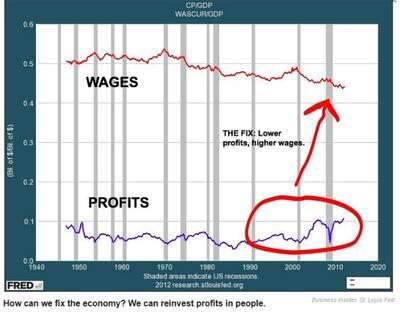
During the first lecture we have talked about the definition of sustainability. Most people agree upon the following definition: “meeting the needs of the present, without compromising the ability of future generation to meet their own needs”. This definition is also used by the World Commision on Environment and Development.
Based on own experiences, I dare to say that most people don’t have a clue about this broad definition of sustainability. Many people I have met in my life, relate sustainability to green energy. Which makes sense, since almost all articles you read about sustainability talk about reduction of greenhouse gasses and the transition to other, more sustainable energy resources. Very important, of course, but sustainability comprises so much more in my eyes. The needs of the present and the needs of future generations are not only revolving around energy needs and greenhouse gasses. The basic needs of people are the needs that form the foundation of Maslow’s pyramid. And it is those needs, that are in jeopardy.
The bottom of the pyramid is made up by physiological needs such as food, water, sex and sleep, followed by the second layer, the safety needs, which consists of security of employment, of health, of resources and of property. Unfortunately we are witnessing a tendency over the last decades, where big multinationals (especially American multinationals), have jumped from below-average profit margins to the highest profit margins in history. This has only been possible by cutting in the workforce and reducing the real (discounted by inflation) wages of the employees. As a result, unemployment is rising and more and more people in developed countries such as the USA or Germany need 2 or more jobs to reach the end of the month. And even with several jobs, more and more people are not able to afford basic necessities, such as decent shelter, healthy food, security of resources and security of property. Probably even worse, these situations can cause a lot of stress, sleeping problems and relational issues. It is clear that this is a very unsustainable situation for a growing number of people, which will not only affect this group, but society as a whole and hence these multinationals as well.
The solution is easy in my eyes. These companies that yield exorbitant high profits, will have to start paying their employees more. By doing that, I assume that loyalty to the employer will be increased, employees will face less financial struggles and thus be happier and in turn these multinationals will get better employees. This can also aid in reducing hiring and training costs. It helps to pump more money into the pockets of the employees, who will most probably let it flow back into the economy. This way, these organizations can also help to restore a healthy economic growth and create long term value, both for themselves, as for the employees and society.
Only by solving sustainability issues on these core levels, we can start thinking about higher needs in the Maslow’s pyramid such as problem solving. I am sure we will then come up with better solutions for all the other sustainability related issues, such as green energy and reduction of greenhouse gasses. So companies: “please start thinking long term and think in maximizing value instead of maximizing profit”.
Where the real power lies
Recently I watched a documentary about food industry in the USA: Fed Up. The main theme in the documentary is about the amount of sugar and fat in typical processed food in the USA, leading to obesity. This might not be the typical subject when thinking about sustainability, but in a sense I thought it was. And that is for two reasons.
First of all, the effect on the consumers. The ingredients in processed food are often not known to the public and even less the effect it has. There is a huge amount of products advertising with low fat products. But without this fat, the product tastes horrible. So sugar is added to make consumers buy the products. -A side note; I was astounded by products that work this way. Even cranberry juice needs a ton of sugar before it is drinkable for the consumer apparently.- So low-sugar products have a ton of fat in them and vice versa. And this is all without the majority of the consumers knowing about this. Even if they know, there are apparently almost no 'real' replacements.
Even worse is the combination of these fattening products with a huge grow in gyms and personal assistants. Even worse is that companies producing said products are often supported by the gyms, to keep a steady flow of members. This leads me to the second reason.
The power of (this) industry and lack of political interest/power to change this. Apparently this industry is so powerful it can continue this way of making products, while this way is known. Of course this is how the market works; if people buy it, keep selling it. But when the government has a plan or initiative to try and change this all, to get healthier food to consumers, the meet a absolutely huge and powerful lobby which has no interest of changing this. I was astonished to hear fries are a vegetable (because it was a potato) and so is pizza (tomato-sauce on top).
Now this is part of the food industry, but I'm quite sure this also works for other industries like cleaner energy. When trying to change something to a more sustainable, healthier of just better system, which will cost income for the bigger companies, there is a huge lobby group which will try to counter the change out of fear for profit-loss. And there's probably not much to do about it because that's where the money is now. And it is only logic that there are people, powerful people, who want to keep it that way for more profit. This I find very regrettable, since it will probably delay many great initiatives and technologies.
What is sustainability?

Participating at the ‘engineering for sustainability development’ course, we had to start a conversation about what we think as more sustainable and unsustainable. During this ‘round of truth’, with the little duck giving the right to speak, everybody expressed different points of view about the topic. Something that was considered extremely unsustainable for one may have never been thought as an issue for another. Therefore I started wondering, should the definition of sustainability be considered subjective?
Actually I believe that there is confusion about what is sustainability. Every individual user, company, industry, etc. defines sustainability with a (slightly) different meaning causing disagreements, conflicts or even certificates of sustainability to projects or companies that are not truly sustainable. A lot of companies have certificates and guarantee for sustainable projects, but they usually have misunderstood what are the requirements for such a design or, even worse, use the term only in the name of profit.
To make things more clear here is the definition of sustainability in architecture according to wikipedia: “Sustainable architecture is architecture that seeks to minimize the negative environmental impact of buildings by efficiency and moderation in the use of materials, energy, and development space. Sustainable architecture uses a conscious approach to energy and ecological conservation in the design of the built environment.” [1] We actually say that sustainability ensures that actions and decisions of today do not inhibit the opportunities of future generations.
Except from all the requirements that an energy neutral (zero energy/green/sustainable) design has, it also has to be feasible in terms of economy and profitability. This is an aspect that often designers/architects don’t take into consideration. On the other hand, stakeholders care mainly about the costs and the profits of an investment. They usually express their worries of failure of an innovative design/idea by presenting arguments and previous situations of failure from similar projects. In this case, the architect has the possibility to convince the stakeholders for the opposite or adapt his design to meet their requirements as well. [2]
All in all participation from both sides at the early stage is more cost efficient and time saving for the project while creating a healthier cooperation between the different parts. Sustainability and feasibility can both be achieved in the most efficient way.
1. http://en.wikipedia.org/wiki/Sustainable_architecture
2. R.M. Mourik, C.F.J. Feenstra, R.P.J.M. Raven, “Examples for the enhancement of societal acceptance in sustainable energy projects on islands and in small communities”, ECN, Nov 2007
Sustainable Buildings
The building as a body or as an organ?
Nowadays the focus in architecture lies on buildings that foresee in their own needs, such as electricity, water, ventilation, heating and cooling. Architects try their best to make passive buildings sustainable. For example using sunshades to keep the heat out in summer and let the sun in during summer. Integrated windmills and PV cells are used to generate the needed amount of electricity. Heat pumps and underground heath storage are often used for generating cold and heat. High and low pressure, for example generated by wind is used for natural ventilation. In this position towards sustainability the building is treated as one organism that keeps itself alive.
Problems start when for example in cities some sites are not suitable for providing recourses as mentioned above. Some sites might be in the shadow of surrounding high rise buildings, leaving no opportunity for using PV cells. On the other hand the high rise buildings having more space for PV than they need on for example the façade or roof. The ground might be unsuitable for digging, so that underground heath storage is no longer an option. Some buildings are simply too small to provide their own resources.
It might be a better idea to treat the buildings as organs of the body, in this case the city is the body. Every building in the city has a specific range of advantages and disadvantages compared to other buildings when it comes to generating a kind of sustainable source. A building with a huge surface on the façade directed to the sun all day could generate an enormous amount of energy for more buildings or organs than only itself. Another building having the same advantage but then directed to wind could make use of this position and provide energy for buildings that are not so ideally exposed to wind or sunlight. Spare heath produced by factories could be transported to all the organs. This can be done in more detail using waste materials of certain industries that could form the input for other industries. A good example is Superuse Architects from Rotterdam. They made a map of Rotterdam which shows all the in- and outputs of materials of different buildings. A map like this can be useful when trying to connect those material chains, reducing the amount of waste.
The city becomes like an ecosystem where every separate part has his own function and serves in their own way the rest of the city.
My views on Sustainability - Transitions and Viability
Sustainability Timeline
Does sustainability have a direction? Does it have a uniform flow - a beginning, an end? Can anyone radically change the course of sustainability?
The very definition of sustainability has been in transition. It is evolving with the human race. In the times of the early man, the definition of sustainability was survival. In the time of the Black Death (1348) it was survival. In the times of the Industrial Revolution it was growth. Now, simply put, it is the judicious use of our resources for our generation without compromising the needs of the future generations.
Sustainable Transitions
In today's world, change, even if it is beneficial, is received with resistance. Majority of the people are happy to go about with their daily routines, and bringing about a change not only brings about a shift in the daily routines but also a shift in the mindset of people. However, it is not impossible to bring about a change.
There are numerous conditions that need to be fulfilled if an individual/group wants to bring about changes in the society. These can range from:
1. Financial/Policy support from government.
2. A dire necessity for improvement (of lifestyle, economy) with an equally stunning solution.
3. It must not radically affect people's cultural/social beliefs.
Another point of concern would be how each country accepts these sustainable transitions. The developed nations - US, UK, and majority of EU are pro change however, the majority of the world comprises of either developing or underdeveloped nations. And bringing about change can be a lot more difficult there.
General Strategies for evaluating viability of a sustainable change/solution
Everywhere we look we can provide answers to problems and suggest improvements. However, to check the viability/necessity of these improvements a simple checklist can be followed.
1. Prioritisation: It is best to look at the broader perspective. If there are more pressing issues that need to be addressed, then the solution provided will be unnecessary at the present time.
2. Time-frame: If the solution provided exceeds the time-frame of obtaining maximum benefit, then it is not a viable solution.
3. Dramatic Change or Gradual Change: There is a dilemma with providing a solution to a problem. Should it be dramatic or should it be gradual? The people who are directly affected will be deciding of the outcome.
4. Weighing the cons: It is safe to say that all changes will have repercussions. If the benefits eclipse the drawbacks then it considered positive, and negative if it is vice-versa.
Conclusion:
With the rapid advances made by society, sustainability seems to be the check on reality. It is us who can set the wheels in motion, and with a few rational strategies and a positive outlook we can improve the world not only for us but for the future as well. Lets embark on this journey together.
To make a better world!
Sustainability in politics
In our first class of Engineering for sustainability we took off our left shoe to make us feel more comfortable amongst each other. Next we were asked what our heroes were in sustainability. This is a very difficult question, which a lot of people attending the class could not answer very specifically. My answer was the Belgian government, because they are stimulating all residents to save energy by for instance not using their 'Droogkast': dryer. And I think it should be the governments in general who should be leading the transition to sustainability.
In most projects it is the politicians that decide what should be done. When you need a grant for your research, you go to the government. When an activist thinks streetlights can be more environmentally friendly, he goes to the government. When a company is designing a new product, they have to follow the rules made by the government. Therefore, I think it is their job to ensure the world becomes more sustainable.
This is why it is also so important for countries to work together on making plans for the future, to set marks they want to reach by a certain year. As long as the whole world works together it should be possible to sustain this planet for future generations. Sustainability is a mindset, not an impossibility.
Blue economy: An interesting strategy for Texel?

This article explains my vision on blue economy and why I believe Texel is a good starting point to implement this strategy.
This article explains my vision on blue economy and why I believe Texel is a good starting point to implement this strategy.
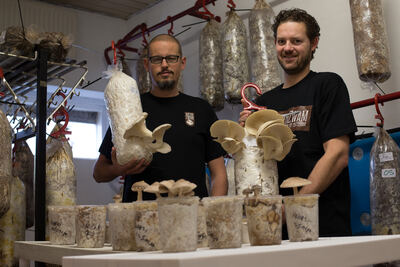
Blue Economy strives to make people and the environment happy and healthy with what we can locally find in the environment. By producing locally, people have more control on their environmental impact. An example, biodegradable soaps that seem sustainable for western people are actually made of palm oil, which come from plantations that have destroyed the rainforest in countries as Indonesia. Organic food is shipped around the world and bio plastics compete with food, which is a problem with a rising global population that requires more land to produce food. The green economy is therefore not always as sustainable and feasible as it suggests.
A bit skeptical about ‘Blue economy’ I went to Pakhuis De Zwijger on 4 November 2014 to attend a lecture given by Gunter Pauli. As explained by the Guru himself, the blue economy keeps production local, which stimulates employment and boosts local economy while being in balance with the environment. Although I was very inspired by his speech I do not see the world transitioning to this strategy because of globalization. Besides this, western needs require resources which cannot be locally produced. As the Zeri movie clip states Blue economy means ‘Making people healthy and happy with what we did not know we had’. But how can we do this, if we do not know what we have? It requires expertise on your local area, entrepreneurs who make it happen, strong communities who can exchange knowledge and small trials to be proven effective before it can be implemented on larger scale. Which entrepreneur would want to go on this treasure hunt which requires a lot of time, knowledge and money to discover how we can use what we already have, where we are not aware of yet?
In short, I did not see it happen for the Netherlands until I read the article ‘Ocean and Coastal Management’ by B. Huang about small islands. Small islands are dependent of an equilibrium between environment and economy, since import of natural resources results in significant transportation costs and creates the risk of external shocks. Their isolation makes self-support (local production) a necessity for environmental, social and economic survival of the island. This means there could be an internal motivation for citizens to pursue a blue economy, since self-support contributes to a better life on the island financially, socially and for the environment. Since Texel has a strong community, this could be an opportunity for people to bundle forces and find out a way to live in balance with nature while stimulating local economy and employment. But what would it take to make it happen?
Sustainable development always asks for an interdisciplinary team since sustainable development is about processes and systems which are too hard to grasps on your own. Different expertise and perspectives help to envision the complete picture and make you think about elements you would not have thought about on your own. Therefore I believe implementing blue economy on Texel would need an interdisciplinary team, which at least contains an ecologist who knows the eco-system of Texel very well. Although an ecologist knows what is available, he/she may not know how to convert this into a product or service. Designers and people with an expertise in business can therefore be useful. Engineers may even be able to build a technology around it based on working principles of nature. A community of Texel citizens who know their needs and challenges may be useful as well to give input on how these resources can be used in daily life. I believe that something simple as a walk on the island with all these experts listening to the ecologist, who tells about the things he/she sees, would already spark creativity to find a way to implement blue economy.
Will the Maker Revolution contribute to a more sustainable world?
We are living in a world dominated by consumerism. A habit which is polluting our environment and is using up our raw materials. A habit caused by the industrial revolution. A time in which products could be manufactured at a high speed and in large amounts due to automation. At this moment we are experiencing the transition from the industrial revolution towards the maker revolution. This is a transition from mass production towards mass customization.
We are living in a world dominated by consumerism. A habit which is polluting our environment and is using up our raw materials. A habit caused by the industrial revolution. A time in which products could be manufactured at a high speed and in large amounts due to automation. At this moment we are experiencing the transition from the industrial revolution towards the maker revolution. This is a transition from mass production towards mass customization.
A change which is largely accepted by the majority because of the possibility of designing your own product according to your own taste and needs. People have always been creating, inventing, building, making, designing and redesigning. The Maker Revolution offers the possibility of doing this with a low amount of resources with skills, which are easy to master, by sharing knowledge in online open source communities.
Now can we see this transition as a sustainable development? We could argue that even more waste is being generated because people are producing more things. Just because they can, people will feel the need to create their own goods, and perhaps sell it. Changing the consumerist mindset of billions of people seems like an impossible challenge. But the maker revolution also offers the possibility of making your own product just for you. One will be able to have one of a kind jewelry or perfectly fitting shoes. This could result in less waste and a longer life of products. Making, also offers the possibility of fixing things. Industrially made products, which are falling apart could be given a new life by making the missing parts to fix it yourself. Now even old products of which parts are not sold in shops anymore can be fixed.
On the whole, the life cycle of customized products prove to be more efficient and produce less waste than mass produced products. But we will have to wait and see whether this transition will really lead to a total reduction in waste or if it will only lead to an increase in consumption and production of goods.
Limits to sustainability
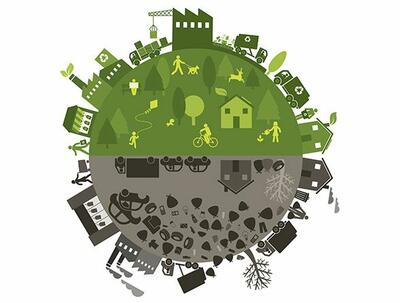
In 1993, when the United Nation’s Brundtland Commission shared with the world the definition of sustainable development as the one “ that meets the needs of the present without compromising the ability of future generations to meet their own needs”, probably never imagined the buzz that the world sustainability would have a couple decades later. This not due to the lack of importance and relevance of such concept to the benefit of humankind and the variety of ecosystems in our planet, but due to the broad use the term is having in several fields of science and business. Nowadays is common to hear such concepts as sustainable agriculture, sustainable tourism, sustainable architecture, sustainable materials, sustainable marketing, sustainable fashion, sustainable finances, sustainable competitive advantage, sustainable energy, sustainable brands, and sustainable lifestyles, among others… the term is used in such a broad sense that sometimes one stop wondering about the questions behind them and the implications of the concept. Moreover, it is used so commonly that seems like a must do to keep you visible and looking up to date, rather than as the ultimately conclusion regarding the moral, social and environmental implications of our behavior and actions.
It is true that the concept is quite broad and leave space for an immense amount of individual interpretations. Nevertheless, such flexibility and relativity can lead to ambiguities in the application of the concept to actions and behaviors as the limits between the well-being of the present and the survival of the future are not clear and have different scopes according to the sphere of human activities you are looking through. Then, we can face situations where, for example, farmers and ecologists can be discussing for the sustainability of an area with opposite perspectives on how to ensure sustainable conditions: for farmers is to cultivate the land following low-impact procedures and for ecologists to transform the area into a natural reservation… but who is right?, I think that both are right and wrong at the same time. The concept of sustainability needs to be build up upon agreements in every territory and needs to include the moral and ethical implications of every action taken beyond just looking at the preservation of natural resources or the improvements on life quality.
Alternatively, with the boom of climate change issues and the economic crises, it becomes evident that there are other limitations of sustainability. On one hand, whether if we want it or not, sustainable solutions’ implementation are mostly encouraged by need. Thus, some resources are meant to be spend now and their scarcity is a mean to encourage desired innovations. As this have been (so far) the basement of the human survival spirit, sustainability has to wait until the proper time for proper actions to start. On the other hand, the switch towards a common perspective on sustainability lies at the basement of our societal values, and changing those takes a tremendous amount of effort and incentives. Consequently, it is needed to increase awareness over the real implications of sustainability to create proper basis for the concept to be implemented with desirable and unambiguous effects on every field, taking into account that a long-term result is the outcome and that common mindset is the target of change.


 Jesper Goorden
Jesper Goorden
 Bertien Broekhans
Bertien Broekhans

 Thijs Schaap
Thijs Schaap
 Lizet
Lizet
 Klara Bergman
Klara Bergman

 Stefan Olsthoorn
Stefan Olsthoorn

 Elia Galiouna
Elia Galiouna

 Rosanne
Rosanne
 Tatiana Armijos Moya
Tatiana Armijos Moya

 Antonio D'Aquilio
Antonio D'Aquilio

 Borris
Borris
 Pinal Desai
Pinal Desai
 Irina
Irina

 Stefan H
Stefan H
 Pieter van Hall
Pieter van Hall
 Iris
Iris
 Derek van den Berg
Derek van den Berg

 Dennis
Dennis
 Thalia
Thalia

 Yannick
Yannick
 Syed Aaquib Hazari
Syed Aaquib Hazari
 Nora
Nora
 Cheyenne Schuit
Cheyenne Schuit
 María José Galeano Galván
María José Galeano Galván
